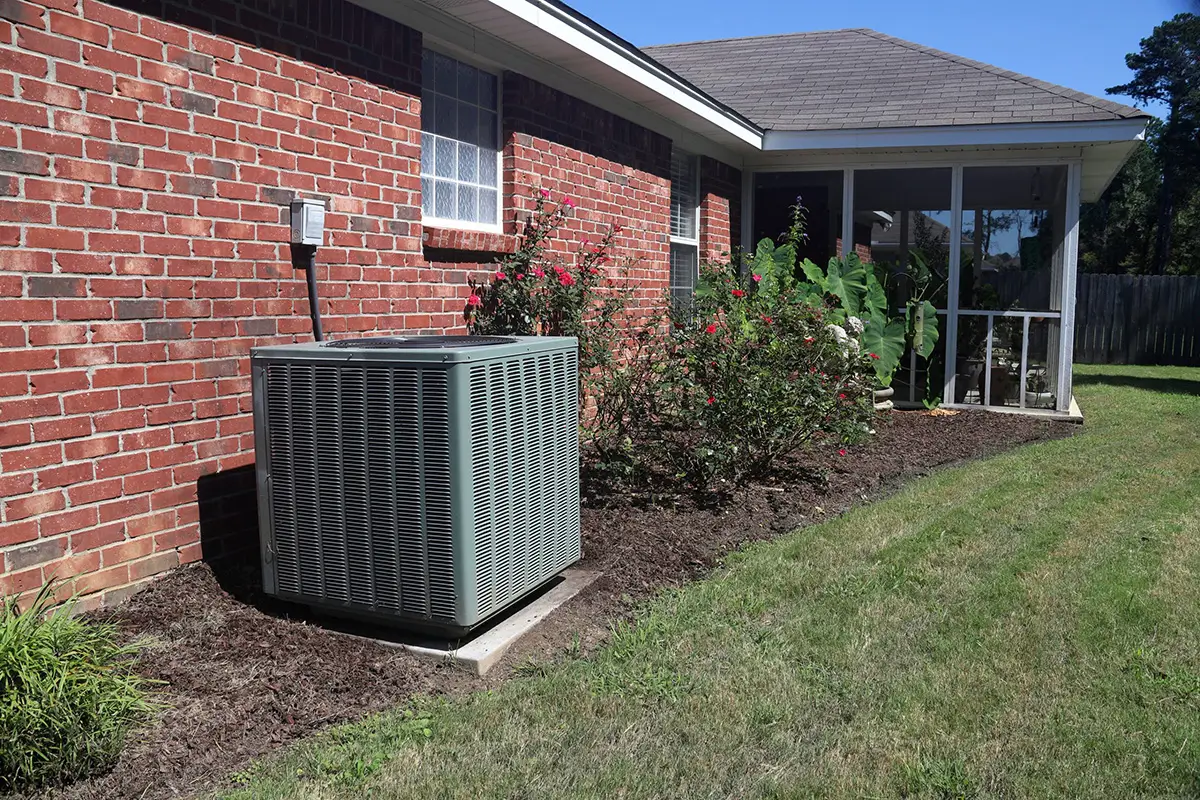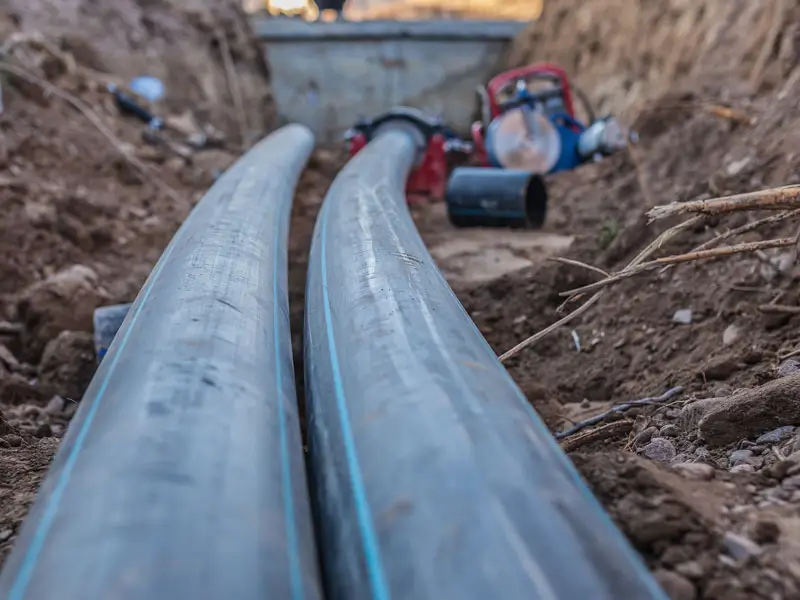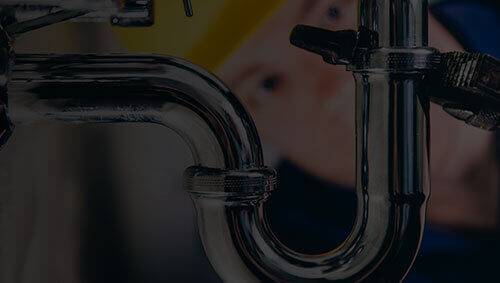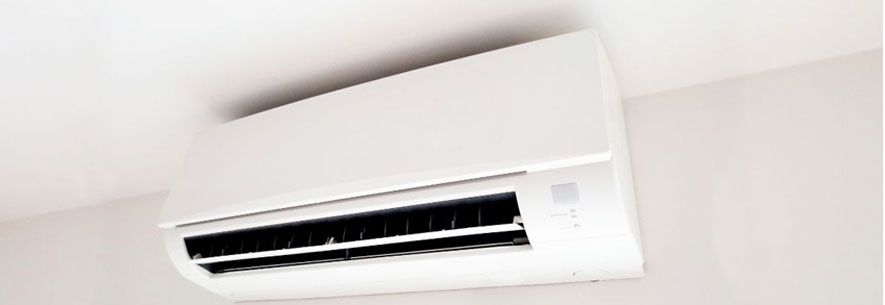You go home after being out and about in Hawaii’s sweltering heat, eagerly anticipating the cool relief that your air conditioning system gives. But when you get there, you notice that something is not quite right. A rush of cool, refreshing air doesn’t greet you and you are met with an eerie silence. You soon realize that your outdoor AC unit isn’t spinning like it should!
The outdoor unit is a very critical component of your AC system. It dissipates heat from the refrigerant lines to keep your home comfortably chilled. So why has it fallen silent? An expression of dread starts creeping across your face – is this a quick fix or the beginning of an expensive nightmare?
An unspinning outdoor fan doesn’t automatically spell disaster although it certainly can be very frustrating – and hot! But, before you let heat stroke set in, let’s explore the potential reasons your AC’s outdoor unit isn’t spinning. It could just be a quick fix!
Whether it’s an electrical glitch, refrigerant leak, drainage clog, or any other potential culprit, we at Steve’s Plumbing & A/C Service will help you pinpoint the root cause.

Understanding the Outdoor Unit
When Hawaiian heat and humidity are beating down, your air conditioner’s indoor and outdoor units become a seriously impressive duo. While the indoor portion handles air circulation throughout your home’s living spaces, the outdoor condenser takes on some heavy lifting of its own.
This exterior team member’s main job? Expelling all that hot thermal energy right back outside where it belongs. As warm indoor air cycles through the refrigerant lines, it transfers its heat over to the compressor and condenser coils outdoors. That’s when the outdoor unit’s fan kicks into high gear, exhaling this hot air stream far away from your abode.
It’s like giving your AC system a deep breath of fresh air after each cooling cycle. The indoor/outdoor choreography allows a constant supply of crisp, dehumidified air to circulate back into your home’s living areas. But if the outdoor half can’t effectively purge that built-up heat outside, the whole cooling operation quickly grows overwhelmed.
While the specifics of refrigerant lines, compressors, blowers and other components look complicated, the indoor/outdoor cooling concept is pretty straightforward. The interior pulls in warm air, chills it down, and cycles it through your home. When that air heats up again, it goes back outdoors to restart the process. An unspinning outdoor fan throws a serious wrench into that choreography!
So if you notice your AC unit’s exterior has fallen silent, don’t just ignore it. That stationary fan is a glaring red flag that your system’s exhaust capabilities have stalled out. Time to do some investigating and get your cold air struggles resolved!
Common Reasons for a Non-Spinning Outdoor Unit
When your air conditioner’s outdoor trooper stops marching to the beat, there could be several potential culprits at play. From electrical hiccups to physical blockers, let’s investigate some of the most common reasons that fans might’ve hit the pause button.
Power Issues
Sometimes the source of an unspinning outdoor unit is as simple as a lack of electrical power. If a circuit breaker has tripped or the unit’s power disconnect got switched off, your condenser won’t have the energy reserves to get that fan whirring. Even an innocent loose wire connection can cut off the flow and ground your cooling capabilities.
Behind the scenes, capacitors and fuses also play crucial roles in powering up that outdoor operation. If a capacitor burns out, it can’t give the motor a proper electrical jumpstart. Blown fuses create a similar showstopper scenario. Getting eyes on those components helps identify possible power supply problems.
Thermostat Settings
Don’t discount a potential thermostat malfunction as well. These smart interior climate controllers tell the outdoor unit when to ramp up cooling – and when to take a break. If thermostat settings are askew, faulty wiring triggers incorrect signals, or internal components called contactors fail, your condenser might get the message to idle when it shouldn’t.
Give your thermostat a thorough once-over, checking that desired temperatures and operating schedules align with when you actually need cool air flowing. Correcting bad setting inputs could be all it takes to wake up that slumbering outdoor fan!
Faulty Contactor
Homing in on that contactor component is particularly handy for pinpointing gremlins affecting the outdoor condenser unit. These electrical switches essentially control the power flow that energizes your fan motor and compressor based on thermostat prompts. If a contactor sticks or burns out from excessive heat and current demands, it can’t properly deliver that electrical spark to get your system spinning.
When a condenser runs intermittently or not at all despite a thermostat’s call for cooling, a faulty contactor is one of the prime suspects. The telltale signs include scorch marks, a burnt odor from the component, or continuity testing indicating an open circuit. Swapping in a new contactor could resurrect full cooling capabilities.
Blocked or Faulty Fan
Let’s also not discount good old-fashioned physical barriers preventing that outdoor fan from spinning freely. Loose debris like foliage, litter or even critter nests taking up residence can clog fan assemblies and wreak rotational havoc. If you live in the colder regions of Hawaii, severe winter cold also allows ice buildup around fan blades, putting a stubborn freeze on operations.
Then you have cases of fans simply wearing out over years of faithful service. Bearings grow shaky, blades crack or warp, and deteriorating fan motors lose their power. Giving that outdoor fan area a thorough visual inspection lets you quickly spot physical culprits preventing smooth spinning.
DIY Troubleshooting Steps
Before you call in the professionals, you can do some basic DIY checks on your unspinning outdoor AC unit first. Some problems may only require a quick fix that you can handle on your own.
But don’t push your comfort level too far – safety should always come first when dealing with electrical systems. Inexperienced handling of the system might just end up making the problem worse. So, if things seem overly complex, it’s best to request expert eyes on the situation.
Power Supply Inspection
Before getting too hands-on, make a quick visual once-over to ensure your outdoor AC unit hasn’t become electrically detached. Locate the condenser’s disconnect box, usually installed within sight on the exterior wall or mounted to the unit itself. Check that the boxed switch or pull-cord hasn’t been inadvertently flipped to the “OFF” position – this simple oversight could be why your fan has fallen silent. If off, simply re-engage the disconnect to allow electrical current flow.
While examining the disconnected area, keep an eye out for any obvious wiring issues too. Frayed or chewed lines, loose connections where wires meet the unit, or any other sketchy scenarios could signal an interruption in the electrical supply chain. Just don’t attempt any amateur wiring repairs yourself!
Thermostat Scrutiny
With outdoor power sources verified, shift indoors to ensure your thermostat is requesting air conditioning as expected. Referencing the model’s user guide, confirm the control is set to “Cool” mode at a desirable temperature level below the current room reading. Most units won’t activate the air handler until indoor temps rise a few degrees beyond the set point.
If your thermostat displays are blank or unresponsive despite fresh batteries, you may have a larger issue cutting communication to the outdoor components.
If the unit fan still isn’t spinning after adjusting thermostat settings accordingly, you may have a wiring issue between that wall control and your condenser. Don’t attempt any advanced thermostat wiring work yourself – call a professional for that diagnosis.
Examining the Contactor
The contactor is an electrical relay that controls power going to the outdoor fan motor and compressor based on signals from the thermostat. If it fails, your entire unit won’t receive properly timed operating instructions.
With the unit powered off, locate the contactor, which will be a small cylindrical or rectangular component near the compressor. Check for obvious signs of burn marks, cracks or melting on the exterior casing. These could indicate an internal failure requiring replacement.
Examining the Fan
With power supplies and thermostats checked, shift your attention entirely outside to the fan itself. Are there any obvious obstructions like leaves, twigs, or nests blocking the fan blades? Carefully remove any debris, taking care not to bend or damage the fan components.
If you notice any built-up grime or oxidation, you can also gently clean the fan blades and housing yourself using a soft brush and all-purpose cleaner. But don’t overdo it – cleaning too aggressively may damage the unit instead.
Preventive Maintenance Tips
While reactive repairs are sometimes unavoidable when outdoor AC units malfunction, incorporating some simple preventive habits into your routine can minimize surprise breakdowns and promote worry-free cooling all summer long. Commit to just a little TLC for your air conditioning system and it’ll return that love with reliable, efficient performance for years to come!
One of the easiest preventive practices is keeping that outdoor condenser unit clear of any airflow obstructions or debris buildup. Maintain a clear perimeter around the unit itself by trimming back any encroaching foliage at least two feet on all sides. This prevents stray branches, leaves and lawn clippings from getting drawn into the fan assembly.
While you’re out inspecting that condenser area, keep an eye out for any industrious critters attempting to take up residence too. Nests and foreign objects can quickly clog airflow and condensation drain openings if left unchecked. Giving the exterior housing and protective grilles a routine rinsing with a garden hose also washes away accumulated gunk.
Don’t neglect that indoor air handler either! Routinely replacing or cleaning clogged filters helps reduce strain on blower fans while improving your home’s overall indoor air quality. Most disposable filters should be swapped quarterly, while permanent washable ones need periodic rinsing every 6-8 weeks. Keeping that air circulation pathway clear optimizes your system’s energy efficiency.
Of course, your most valuable preventive measure is enrolling in an annual professional tune-up service. Certified HVAC techs thoroughly inspect, test, calibrate and clean your entire AC system according to the manufacturer’s specifications. This preventive reset allows identifying minor issues before they snowball into more costly repairs while restoring peak performance and efficiency.
Don’t Sweat a Non-Spinning Outdoor AC Unit
The familiar whirring of your outdoor AC unit provides a reassuring soundtrack each summer. So when that comforting hum suddenly falls silent, it’s understandable to feel a bit hot under the collar. But don’t start sweating just yet! With some basic DIY troubleshooting, that unspinning outdoor fan may simply need a quick reset or minor fix to get your cooling relief back on track.
By methodically checking for power supply mishaps, thermostat setting snafus and potential debris blockages, you may very well pinpoint an easy solution yourself. But if DIY efforts don’t reignite that outdoor unit’s fan, don’t despair – the certified pros at Steve’s Plumbing & AC Service are just a call away.
Our experienced HVAC technicians possess the specialized tools and training to safely diagnose and repair even the trickiest air conditioning woes. We’ll quickly get to the root cause, from electrical gremlins and mechanical failures to refrigerant leaks beyond homeowner ability.
Don’t resign yourself to sweltering indoors any longer than needed. Call Steve’s Plumbing & AC Service at (808) 563-4054 or schedule service online, and let’s get your cool air flowing again.



